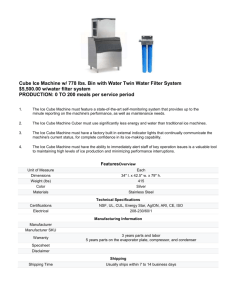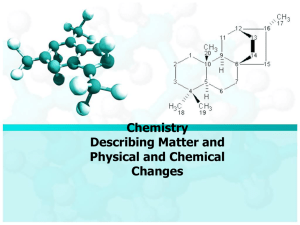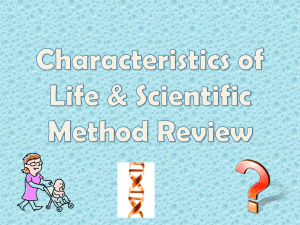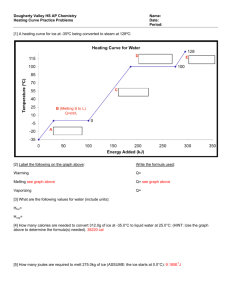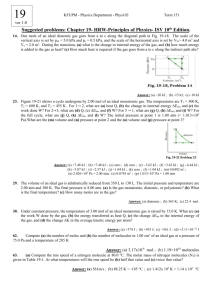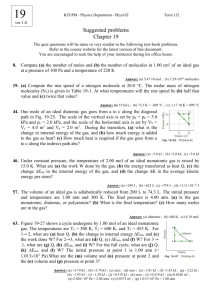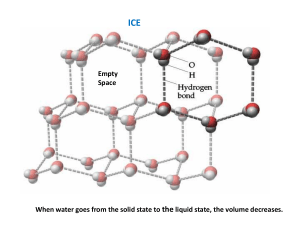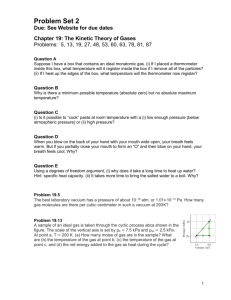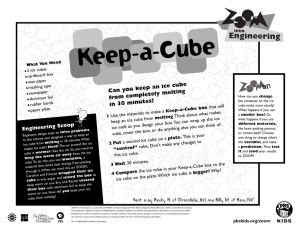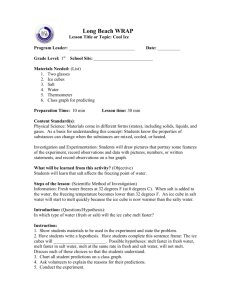Tipler Chapter 18 Name: #1 Ice in Water A single 50 g ice cube is
advertisement
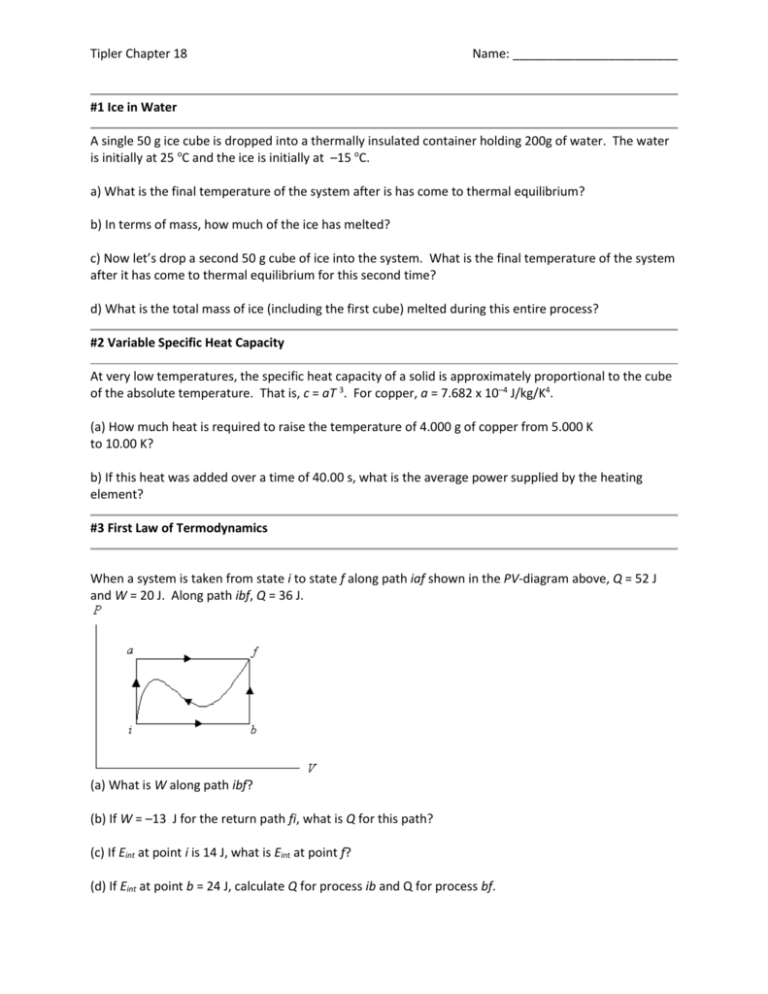
Tipler Chapter 18 Name: ________________________ #1 Ice in Water A single 50 g ice cube is dropped into a thermally insulated container holding 200g of water. The water is initially at 25 oC and the ice is initially at –15 oC. a) What is the final temperature of the system after is has come to thermal equilibrium? b) In terms of mass, how much of the ice has melted? c) Now let’s drop a second 50 g cube of ice into the system. What is the final temperature of the system after it has come to thermal equilibrium for this second time? d) What is the total mass of ice (including the first cube) melted during this entire process? #2 Variable Specific Heat Capacity At very low temperatures, the specific heat capacity of a solid is approximately proportional to the cube of the absolute temperature. That is, c = aT 3. For copper, a = 7.682 x 10–4 J/kg/K4. (a) How much heat is required to raise the temperature of 4.000 g of copper from 5.000 K to 10.00 K? b) If this heat was added over a time of 40.00 s, what is the average power supplied by the heating element? #3 First Law of Termodynamics When a system is taken from state i to state f along path iaf shown in the PV-diagram above, Q = 52 J and W = 20 J. Along path ibf, Q = 36 J. (a) What is W along path ibf? (b) If W = –13 J for the return path fi, what is Q for this path? (c) If Eint at point i is 14 J, what is Eint at point f? (d) If Eint at point b = 24 J, calculate Q for process ib and Q for process bf. #4 Pressure, Volume & Work Examine the PV- diagram of a system above. The units for P and V are atmospheres (atm) and liters (L). Process A to B and B to C are straight lines on the diagram. a) How much is the work done by the system from A to C in Joules? Now consider, a gas as it passes through the cycle shown above while contained within a chamber. QAB = 25 J, process BC is adiabatic, and the net work done during the process is 14 J. b) How much work is done during process AB in Joules? c) What is the total energy transferred by the system to the environment during process CA in Joules? #5 Cyclic Process Two moles of a monatomic, ideal gas is in a sealed container. The gas starts at point a where the initial pressure is P1 = 1.14 x 105 Pa and the initial volume is V2 = 0.0571 m3. First, the volume of the gas is decreased at a constant pressure (at P1) to a volume of V1 = 0.0501 m3. Second, the pressure of the gas is increased at a constant volume (at V1) to a pressure of P2 = 1.48 x 105 Pa. Third, the volume of the gas is increased at a constant pressure (at P2) back to the original volume V2. Finally, the pressure of the gas is decreased at a constant volume (at V2) to its original pressure of P1. a) How much work was done by the gas for the entire cycle? b) How much heat was added to the gas the system for the entire cycle? c) Calculate the values of the internal energy each of the four states a, b, c, and d. Are these values consistent with the change in internal energy for the complete cycle? #6 Engine The PV-diagram above represents 3.00 mol of an ideal monatomic gas. The gas is initially in state A. Process AB is isobaric, process BC is isochoric, and process CA is adiabatic. a) Calculate the temperature at states B and C. b) Calculate the heat added to the gas for each process and for the complete cycle. c) Calculate the work done by the gas for each process and the complete cycle. d) Calculate the change in internal energy for each process and for the complete cycle. #7 Heat Capacity of Air (a) How much heat is required to raise the temperature of the air in a sealed room (a cube 3.2 m on a side) from 15 oC to 25 oC? Assume that air is entirely N2 (molecular mass = 28 g/mol) and that the air pressure is initially at P0 = 101 kPa. b) Of course, air isn't really pure nitrogen. It is approximately 78.5% N2 and 21.5% O2 (molecular mass = 32g/mol) by volume. (Ignore the other gasses, mostly argon.) How much heat is required in this case?
